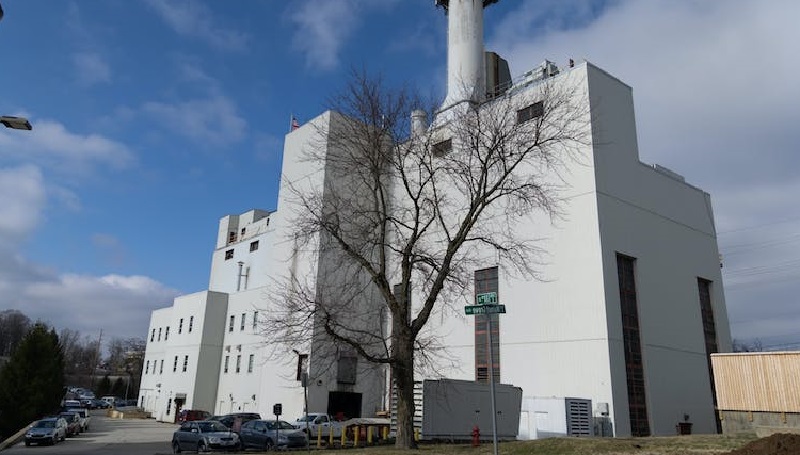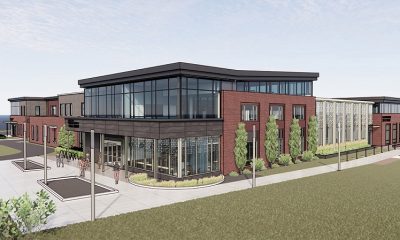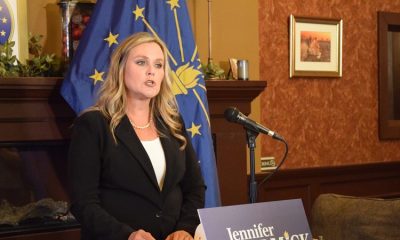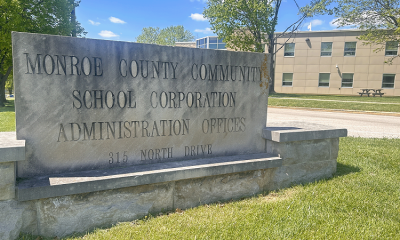Local News
The Bloomington City Council approves a resolution to establish a regional climate coalition

Bloomington, Indiana – On April 12, the Bloomington City Council overwhelmingly agreed to accept Project 46, a partnership between Bloomington, Nashville, and Columbus Indiana that aims to tackle climate change.
On March 24, Project 46 was introduced by Bloomington Mayor John Hamilton, Nashville Town Manager Sandie Jones, and Columbus Mayor Jim Lienhoop. The three leaders have urged the county commissioners, county councils, town and city councils to endorse the proposal by signing a resolution.
According to a City of Bloomington press release, a task force will be formed with members from each town to monitor the project after the resolutions are approved. On April 20, the resolution will be put to the municipal council of Nashville. According to their website, the City of Columbus has not yet scheduled a vote on the resolution.
The project intends to improve collaboration and gain federal funding for sustainable development, according to Alex Crowley, director of Bloomington’s Economic and Sustainable Development Department.
Crowley claimed that because of their smaller size, communities like Nashville and small cities like Bloomington sometimes get overlooked when applying for federal climate subsidies. Securing grant money, according to him, will be crucial in the upcoming years due to an increase in federal monies brought on by the Infrastructure Investment and Jobs Act and the Inflation Reduction Act. Crowley claimed that by joining forces, they will be able to request for more financing because of the combined population and resources.
The coalition’s approach will be stronger because it is cross-sectoral, according to Crowley, if Columbus’ commercial sector and Bloomington’s efforts in climate change are combined. As an illustration, Bloomington passed a climate action plan in April 2021 with the aim of becoming carbon neutral by 2050. Cummins, a firm with its headquarters in Columbus, has promised to significantly reduce its consumption of water and greenhouse gas emissions.
“We’re an interesting counterbalance to each other,” Crowley said. “Some of our strengths are some of their weaknesses, and some of their strengths are some of our weaknesses.”
Lienhoop expressed his hope that the policy would foster greater cross-partisan cooperation and result in more bipartisan solutions, at least at the local level.
“Mayor Hamilton is a Democrat, and I’m a Republican,” he said. “I just want to show people that those differences don’t apply when we’re talking about municipalities and doing our best to leave as little of an environmental footprint as we can.”
Along with the advantages of cooperation, Lienhoop asserted that friendly rivalry among all interested communities will hasten efforts to decarbonize.
“There’s no grand prize, there’s no money to be had at the end of the finish line,” he said. “But I think we all do well when we have a bit of a goal.”
Despite the lack of many details, Lienhoop predicted that the coalition’s strategy would involve creating a mechanism to assess the total greenhouse gas emissions in a town. Each community will be better equipped to monitor its reductions after a measurement is finished.
Hamilton stated that he hopes to see the initiative improve the area’s prospects of winning federal grant money, lessen the carbon impact of transportation, and improve building efficiency. The coalition’s objectives, he said, will depend on including safeguards for rural watersheds, forests, and agriculture in addition to bigger renewable energy installations.
“It would be terrific if our area could get a large-scale clean energy project, whether it’s a big solar array or a wind farm,” Hamilton said.
Hamilton expressed his hope that other regional coalitions will be motivated by the proposal to solve what he calls “the climate emergency.”
“I don’t think there’s any place in Indiana that’s done this,” he said. “We hope that as we find a way forward with this, if it’s successful, others can learn from us.”
Although there is no formal procedure for additional cities to join the project, Hamilton said he expects that related counties and neighboring towns will join by adopting a resolution and pledging financial support for its initiatives.
“This is one of the most difficult challenges in front of governments, societies and communities,” Hamilton said. “Addressing it together is really encouraging, and I think we’re more likely to be successful.”
-

 Indiana2 weeks ago
Indiana2 weeks agoWhile staff members get ready to move into a new structure, the Westfield Washington Public Library shutters
-

 Local News2 weeks ago
Local News2 weeks agoVehicle crashes into the Monroe County food bank
-

 Local News2 weeks ago
Local News2 weeks agoNew Fort Wayne mayor, its 1st Black leader, in caucus to replace late mayor
-

 Local News2 weeks ago
Local News2 weeks agoIndiana Chamber of Commerce program recognizes Indiana Members Credit Union
-

 Local News2 weeks ago
Local News2 weeks agoThe biggest teachers union in Indiana supports Jennifer McCormick for governor
-

 Local News2 weeks ago
Local News2 weeks agoAn interim superintendent was selected during the MCCSC board meeting, and Childs-Templeton Elementary Schools will merge
-

 Indiana1 week ago
Indiana1 week agoAmazon Web Services is investing $11 billion to build a new data center in Indiana
-

 Local News1 week ago
Local News1 week agoDemocrat Jennifer McCormick gets teacher union endorsement in race for Indiana governor






Leave a Reply